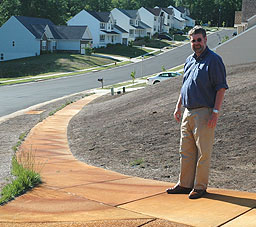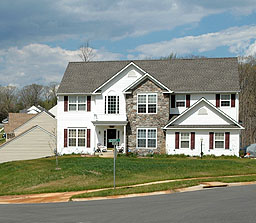Toxic Soil
Fredericksburg, Virginia, 2003–2006
Grass would not grow on lawns of many new homes in the Great Oaks subdivision, even though sod had been installed twice. The problem was highly acidic soil that had been exposed and moved during landscaping.
Acid sulfate soils are natural. They form on marine sediments that were waterlogged, salty, and contained sulfide minerals. As long as they remain undisturbed underground, they pose no risk. But when exposed to air, the sulfides react with oxygen to form sulfuric acid and dissolved iron.
Vegetation, wildlife, and concrete and steel are susceptible to harm from acid sulfate soils. Iron washed from the soil by rainwater stained the sidewalks red at Great Oaks, while sulfuric acid dissolved the silicate cement and exposed the gravel aggregate in the concrete.
The developer took extensive measures to reclaim the soil, applying 12 tons of lime per acre and at least 7 pounds of compost for every 1,000 square feet. Local building regulations now require soil testing for acidity before excavation or ground cover installation.


